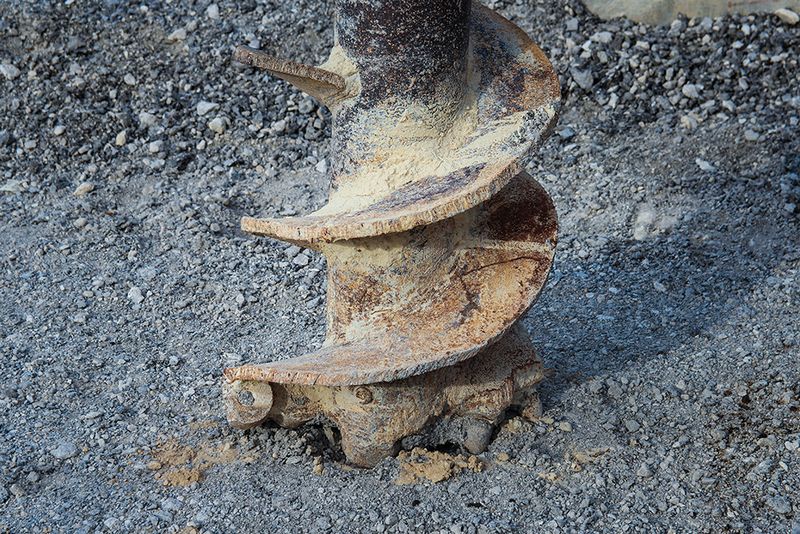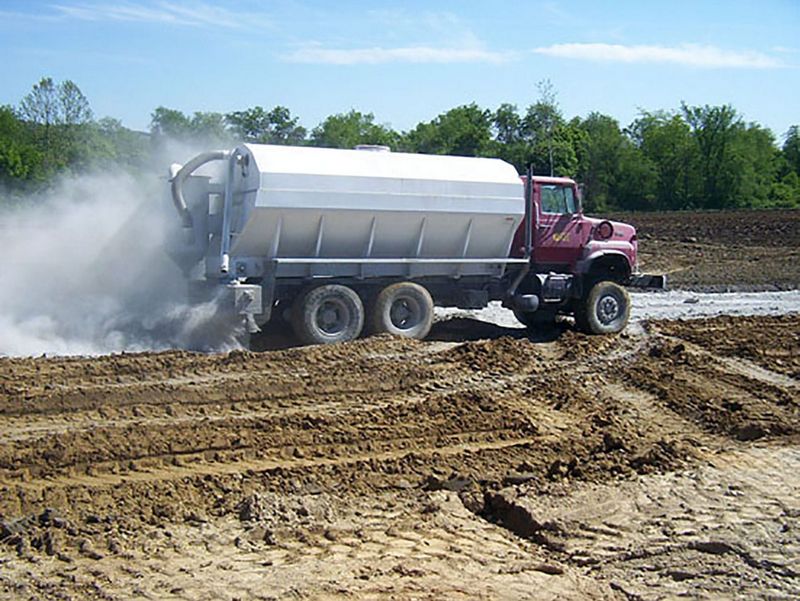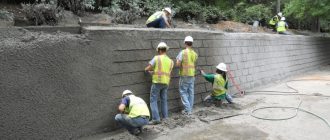
What is Soil Modification?
When it comes to gardening and landscaping, soil plays a crucial role in determining the health and vitality of plants. Understanding soil modification is essential for any gardener or landscaper looking to create the optimal growing conditions for their plants. Soil modification refers to the process of improving the physical and chemical properties of soil to make it more suitable for plant growth.
The first step in understanding soil modification is to assess the existing soil conditions. Different plants require different soil types and compositions, so it’s essential to determine the pH level, moisture content, and nutrient levels of the soil. This information will guide the soil modification process and help identify the specific amendments needed.
Soil modification can involve various techniques and amendments, depending on the specific needs of the soil and plants. Common soil amendments include adding organic matter, such as compost or manure, to improve the soil’s structure and fertility. Additionally, adjusting the pH level through the application of lime or sulfur can help create optimal growing conditions for plants. Other soil modifications may include improving drainage, adding nutrients through the application of fertilizers, or addressing specific issues like soil compaction.
It’s important to note that soil modification is an ongoing process, as soil conditions can change over time. Regular soil testing and monitoring can help identify any deficiencies or imbalances and allow for timely amendments. By understanding the principles of soil modification and investing time and effort into improving soil quality, gardeners and landscapers can ensure the long-term success and health of their plants.
What is Soil Modification?
Soil modification refers to the process of altering or improving the properties of soil to make it more suitable for specific purposes, such as growing plants or constructing foundations. It involves making changes to the physical, chemical, and biological characteristics of the soil to enhance its performance and functionality.
Why is Soil Modification Important?
Soil modification is important because not all soils are naturally ideal for the intended use. Different types of soils have different properties, including texture, drainage, nutrient content, and pH levels. These properties can affect plant growth, water holding capacity, and soil stability.
By modifying the soil, it is possible to create a more favorable environment for plant growth, improve drainage and water retention, enhance nutrient availability, and increase soil stability. Soil modification can also be necessary to address specific issues such as soil compaction, excessive acidity or alkalinity, or poor drainage.
Types of Soil Modification
There are various techniques and materials used for soil modification, depending on the specific requirements and conditions. Some common methods of soil modification include:
- Adding Amendments: Adding organic or inorganic amendments, such as compost, peat moss, or sand, can improve soil structure, drainage, and nutrient content.
- Chemical Adjustments: Adjusting the pH levels of the soil using the appropriate chemicals can create optimal conditions for plant growth.
- Compaction Relief: Breaking up compacted soil through methods like deep tilling or aeration can improve soil structure and allow for better root penetration.
- Soil Stabilization: Adding stabilizing agents such as lime or cement can improve the strength and stability of the soil, making it suitable for construction purposes.
Conclusion
Soil modification is a crucial process to optimize soil properties for specific uses. It allows for improved plant growth, better drainage, enhanced nutrient availability, and increased soil stability. Understanding the specific requirements and applying appropriate soil modification techniques can greatly contribute to the success of various applications, whether it’s agriculture, landscaping, or construction.
The Importance of Soil Modification
Soil modification is a crucial process in agriculture and horticulture to improve the quality and fertility of soil. It involves altering the physical, chemical, and biological properties of the soil to enhance its ability to support plant growth and production.
Increased Nutrient Availability
One of the key benefits of soil modification is the increased availability of nutrients to plants. By adding organic matter, such as compost or manure, to the soil, nutrients are released slowly over time, providing a steady supply to plants. This ensures optimal growth and development, leading to healthier and more productive crops.
Improved Soil Structure
Soil modification helps improve soil structure, which is essential for root development and water movement. By incorporating organic matter into the soil, it enhances its ability to hold water and nutrients, preventing them from leaching away. This promotes better water infiltration and drainage, reducing the risk of waterlogging and soil erosion.
Enhanced Soil Fertility
Through soil modification, soil fertility can be significantly increased. By balancing the soil pH, adding essential nutrients, and improving soil structure, the soil becomes more conducive to plant growth. This results in higher crop yields and healthier plants, leading to increased profitability for farmers and gardeners.
Reduced Environmental Impact
Soil modification plays a role in reducing the environmental impact of agriculture and horticulture practices. By enhancing soil fertility and structure, it reduces the need for synthetic fertilizers and pesticides, minimizing the risk of water pollution and soil degradation. It also promotes sustainable farming practices, improving long-term soil health and biodiversity.
In conclusion, soil modification is of utmost importance in agriculture and horticulture. It improves nutrient availability, enhances soil structure, increases soil fertility, and reduces environmental impact. By investing in soil modification practices, farmers and gardeners can achieve optimal plant growth and contribute to sustainable and profitable farming.
Understanding Soil Composition
Soil is a complex mixture of organic matter, minerals, water, and air. Understanding the composition of soil is essential for effective soil modification and management.
Organic Matter: Organic matter in soil comes from the decomposition of plants, animals, and microorganisms. It includes dead leaves, roots, and other plant materials that provide nutrients and improve soil structure.
Minerals: Minerals make up the inorganic part of soil and are derived from rocks and minerals in the earth’s crust. The three main types of soil particles based on size are sand, silt, and clay. The composition of these particles determines the soil’s texture, drainage, and fertility.
Water: Water is an essential component of soil. It fills the spaces between soil particles, ensuring that plants have access to moisture and nutrients. The amount of water in the soil affects its structure, fertility, and ability to hold nutrients.
Air: Just like plants, soil also needs oxygen for respiration. The spaces between soil particles provide air channels, allowing oxygen to reach the roots of plants. Proper soil structure and drainage are crucial for maintaining a healthy balance of air in the soil.
Soil pH: The pH level of soil is a measure of its acidity or alkalinity. Different plants thrive in different pH ranges, so understanding the soil’s pH is essential for selecting suitable crops or making necessary adjustments with soil amendments.
Soil Testing: Soil testing is an important step in understanding the composition of soil. It helps identify nutrient deficiencies, pH levels, and other factors that may affect plant growth. By analyzing the soil’s composition, appropriate modifications and amendments can be made to optimize plant growth and improve soil health.
The Basic Components of Soil
Soil, the combination of minerals, organic matter, water, and air, plays a crucial role in supporting plant growth. It acts as a medium for plants to anchor their roots, obtain nutrients, and store water. The components of soil vary in composition and proportion depending on the location and management practices. They can be broadly classified into four main categories:
-
Minerals: Minerals are the inorganic substances that make up the solid framework of soil. They originate from weathering of rocks and minerals, and their composition greatly affects the soil’s fertility and texture. The main mineral particles found in soil are sand, silt, and clay.
-
Organic Matter: Organic matter consists of decomposed plant and animal material. It plays a vital role in maintaining soil structure, nutrient cycling, and water retention. Organic matter improves soil fertility, promotes beneficial soil organisms, and helps in the prevention of erosion.
-
Water: Water is an essential component of soil, and its presence is crucial for plant growth. It provides plants with a medium to absorb nutrients and facilitates various biological and chemical processes within the soil. The amount of water present in the soil determines its moisture content and affects its ability to support plant life.
-
Air: Air fills the spaces between soil particles and allows for gas exchange between the soil and the atmosphere. Adequate air circulation in the soil is important for root respiration and the survival of soil organisms. Poorly-drained soils with limited air spaces can lead to decreased plant growth and root rot.
To understand and manage soil effectively, it is important to consider the balance and interaction of these basic components. By optimizing their composition and maintaining appropriate levels, soil can provide a sustainable and supportive environment for plant growth.
The Role of Organic Matter in Soil
Organic matter plays a crucial role in soil modification and is essential for maintaining a healthy and productive soil ecosystem. It refers to the decaying remains of plants and animals, including leaves, roots, and decomposing organisms.
Improving Soil Structure: Organic matter helps improve soil structure by acting as a glue, binding soil particles together. It creates aggregates, which are clusters of soil particles, improving soil porosity and allowing for better water and air movement.
Enhancing Nutrient Retention: Organic matter is rich in nutrients, such as nitrogen, phosphorus, and potassium. It acts as a reservoir, storing these nutrients and releasing them slowly over time, ensuring a steady supply for plant growth. It also aids in preventing nutrient leaching, the loss of nutrients through water runoff.
Promoting Microbial Activity: Numerous microorganisms, including bacteria, fungi, and earthworms, thrive in organic matter-rich soils. These organisms contribute to the breakdown and decomposition of organic matter, releasing nutrients in forms that plants can absorb. They also help suppress plant diseases and improve soil fertility.
Increasing Water Holding Capacity: Organic matter acts as a sponge, retaining moisture and increasing the water holding capacity of the soil. It reduces water runoff, improves drainage in heavy clay soils, and reduces the need for frequent irrigation.
Preventing Soil Erosion: The presence of organic matter can help protect soil from erosion caused by wind and water. It forms a protective layer on the soil surface, reducing the impact of raindrops and preventing soil particles from being carried away by wind or water.
Overall, organic matter is crucial for maintaining soil health and fertility. Adding organic matter through practices like composting, cover cropping, and crop rotation can greatly improve soil quality and ensure sustainable and productive agriculture.
Factors Affecting Soil Modification
Soil modification refers to the process of altering or improving the properties of the soil to meet specific needs or objectives. It is important to understand the factors that can affect soil modification in order to achieve desired results. The following factors play a crucial role in determining the success of soil modification:
- Soil Type: Different types of soil have different properties, such as texture, composition, and drainage capacity. These properties can influence the effectiveness of soil modification techniques. For example, clay soils may require more amendments to improve drainage, while sandy soils may need more organic matter to increase water retention.
- Climate and Weather: The climate and weather conditions in a particular location can impact soil modification. Factors such as temperature, rainfall, and evaporation rates can affect soil moisture levels and the effectiveness of amendments. For example, in areas with high rainfall, soil amendments may leach out more quickly, requiring frequent reapplication.
- Plant Selection: The choice of plants or crops to be grown in the modified soil can influence the type and amount of soil modification needed. Different plants have different nutrient requirements and preferred soil conditions. For example, acid-loving plants may require the addition of sulfur to lower soil pH, while legumes may benefit from the addition of nitrogen-fixing bacteria.
- Topography and Slope: The slope and topography of the land can affect soil modification by influencing water drainage and erosion rates. Steep slopes may require additional soil stabilization measures, such as terracing or the use of erosion control materials, to prevent soil erosion and nutrient runoff.
- Existing Soil Conditions: The current condition of the soil, including its nutrient levels, pH, structure, and organic matter content, can determine the extent and type of modifications required. Soil testing can help identify deficiencies and guide the selection of suitable amendments.
- Budget and Resources: The availability of budget and resources can impact soil modification decisions. Some modifications, such as adding large amounts of organic matter or installing drainage systems, can be costly. Understanding the available budget and resources can help prioritize and plan soil modification activities.
By considering these factors and conducting proper soil analysis, it is possible to implement effective soil modification techniques that improve soil fertility, structure, and drainage, ultimately leading to healthier plants and more productive landscapes.
Climate and Weather Conditions
The climate and weather conditions play a significant role in the formation and development of soil. Various factors, such as temperature, precipitation, and wind, can influence the composition and characteristics of soil. Here are some ways in which climate and weather conditions affect the soil:
- Temperature: The temperature of an area affects the rate of chemical reactions within the soil. Higher temperatures generally increase the decomposition of organic matter, resulting in faster soil formation. Conversely, colder temperatures slow down soil formation processes.
- Precipitation: The amount and distribution of rainfall in an area can affect the water-holding capacity of the soil. Excessive rainfall can lead to soil erosion and leaching of nutrients, while low rainfall can cause soil dryness and reduce plant growth.
- Wind: Wind can contribute to soil erosion by removing the topsoil and exposing the underlying layers. This can result in the loss of valuable nutrients and decrease the overall fertility of the soil.
The interaction of these climate and weather conditions creates specific soil profiles and types in different regions. For example, tropical regions with high temperatures and heavy rainfall may have nutrient-rich, deep soils suitable for agriculture. In contrast, arid regions with low rainfall and high winds often have shallow, sandy soils that are less suitable for plant growth.
Understanding the climate and weather conditions of a particular area is essential when considering soil modification techniques. Proper soil management, such as irrigation or erosion control, can help mitigate the negative impacts of climate and weather on the soil and improve its overall quality for various applications.
Soil pH Levels
The pH level of soil refers to its acidity or alkalinity. It is an important factor that affects the availability of nutrients to plants and the overall health and growth of vegetation. Modifying soil pH levels can be necessary in order to create optimal conditions for different types of plants.
Soil pH is measured on a scale from 0 to 14, with 7 being considered neutral. Values below 7 indicate acidic soil, while values above 7 indicate alkaline soil. Different plants prefer different pH levels, so it is important to adjust the soil accordingly.
Acidic soil:
- Acidic soil has a pH level below 7.
- Some plants, such as blueberries and rhododendrons, thrive in acidic soil.
- To modify acidic soil, you can add materials such as agricultural lime or wood ashes to increase the pH level.
Neutral soil:
- Neutral soil has a pH level of 7.
- Many plants can grow well in neutral soil.
Alkaline soil:
- Alkaline soil has a pH level above 7.
- Plants such as lavender and sage prefer alkaline soil.
- To modify alkaline soil, you can add materials such as sulfur or compost to decrease the pH level.
It is important to test the pH level of your soil before making any modifications. This can be done using a soil pH testing kit or by sending a soil sample to a laboratory for analysis.
| 0-3.5 | Very acidic |
| 3.6-5.0 | Acidic |
| 5.1-6.0 | Mildly acidic |
| 6.1-7.0 | Neutral |
| 7.1-8.0 | Mildly alkaline |
| 8.1-9.0 | Alkaline |
| 9.1-14 | Very alkaline |
Nutrient Availability
In order for plants to thrive, they need access to essential nutrients. Nutrients are vital for various plant functions, such as growth, development, and reproduction. The availability of nutrients in the soil plays a crucial role in determining the health and productivity of plants.
Soil acts as a reservoir for nutrients, but not all nutrients are equally available to plants. Several factors influence nutrient availability, including:
- Soil pH: The pH level of the soil affects nutrient availability. Some nutrients are more accessible to plants in acidic soils, while others are more available in alkaline soils.
- Organic matter: Organic matter enriches the soil and improves nutrient availability. It acts as a source of slowly released nutrients and enhances the cation exchange capacity of the soil.
- Microorganisms: Soil microorganisms play a crucial role in nutrient cycling and availability. They break down organic matter, release nutrients from organic compounds, and facilitate nutrient uptake by plants.
- Texture: Soil texture affects nutrient availability because it influences water retention and drainage. Sandy soils allow nutrients to leach, while clay soils tend to retain nutrients and may suffer from poor drainage.
Plants require macronutrients, such as nitrogen, phosphorus, and potassium, in larger quantities, while micronutrients, such as iron, manganese, and zinc, are needed in smaller amounts. The availability of these nutrients in the soil can be improved through various soil modification techniques.
One common method to enhance nutrient availability is through the application of fertilizers. Fertilizers provide plants with the necessary nutrients, either in organic or inorganic forms. Organic fertilizers, such as compost and manure, improve soil structure and microbial activity, thus promoting nutrient availability.
Another technique to improve nutrient availability is through soil amendments. Certain amendments, like lime and sulfur, can help adjust soil pH to optimize nutrient availability. Additionally, adding organic matter through amendments, such as peat moss or compost, can increase nutrient content and improve nutrient availability.
Overall, understanding the factors that influence nutrient availability is essential for successful plant growth. By modifying the soil to optimize nutrient availability, gardeners and farmers can promote healthier and more productive plants.
Methods of Soil Modification
There are several methods of modifying soil to improve its characteristics and promote better plant growth. These methods can be classified into two main categories: chemical methods and physical methods.
- Chemical Methods:
- Adding fertilizers: Fertilizers are chemical substances that provide essential nutrients to the soil, improving its fertility and promoting plant growth.
- Adjusting pH levels: Soil pH significantly affects plant growth. Adding lime can increase soil pH, while adding sulfur can decrease it. Modifying pH levels can help create a better environment for plant roots.
- Adding organic matter: Organic matter, such as compost or manure, can be added to the soil to improve its structure, nutrient content, and water retention capacity.
- Physical Methods:
- Tilling: Tilling is the process of breaking up compacted soil to improve its aeration, drainage, and root penetration. It helps loosen the soil and create a better environment for plant roots.
- Adding mulch: Mulch is a layer of organic or inorganic material that is placed on the soil surface. It helps retain soil moisture, regulate temperature, suppress weed growth, and improve soil structure.
- Amending soil texture: Soil texture refers to the proportions of sand, silt, and clay particles in the soil. Depending on the desired texture, different types of soil amendments, such as sand, peat moss, or vermiculite, can be added to modify the soil’s texture.
By using a combination of chemical and physical methods, soil modification can greatly improve the conditions for plant growth, leading to healthier and more productive gardens or agricultural fields.
Tillage and Soil Aeration
Tillage refers to the mechanical manipulation of soil to improve its structure and prepare it for planting. This process involves actions like plowing, cultivating, and harrowing.
One of the main benefits of tillage is that it helps to break up compacted soil, allowing roots to penetrate deeper and access nutrients and water more easily. By loosening the soil, tillage also improves the aeration of the soil, allowing oxygen to reach the roots, promoting healthy root development.
Soil aeration is crucial for plant growth because roots need oxygen for respiration. When soil becomes compacted, the pore spaces that normally hold air are filled with water or soil particles, depriving the roots of oxygen. This can lead to root suffocation and poor plant growth.
Tillage also helps to mix organic matter, like crop residues or compost, into the soil. This organic matter improves the soil’s fertility, nutrient-holding capacity, and water-holding capacity. It also enhances the soil’s structure, creating a better environment for root growth.
However, it’s important to note that while tillage can have positive effects on soil structure and aeration, it can also have negative consequences. Excessive tillage can lead to erosion, soil compaction, and loss of organic matter. It can disrupt the soil ecosystem and harm beneficial microorganisms.
In recent years, there has been a growing interest in reduced tillage or no-till systems. These systems minimize soil disturbance, leaving crop residues on the soil surface to protect it from erosion and help maintain soil organic matter. They rely on other practices, like cover cropping and crop rotation, to improve soil health.
|
|
Amending Soil with Organic Materials
Soil modification is an essential part of creating healthy and productive gardens. One of the most effective ways to improve soil quality is through the addition of organic materials. Organic materials, such as compost, manure, and cover crops, can provide numerous benefits to the soil and the plants that grow in it.
Compost: Compost is a rich source of organic matter that can improve soil structure, fertility, and moisture-holding capacity. It is created through the decomposition of organic materials, such as kitchen scraps, yard waste, and leaves. When added to the soil, compost enhances its ability to retain water, nutrients, and beneficial microorganisms. Additionally, compost can help suppress diseases and pests, as well as improve overall plant health and growth.
Manure: Manure is another valuable organic material that can be used to amend soil. It is rich in nutrients, including nitrogen, phosphorus, and potassium, which are essential for plant growth. When properly composted, manure is safe to use and can provide a slow-release source of nutrients to plants. However, it is important to ensure that manure is well-aged and free from pathogens before applying it to the soil.
Cover Crops: Cover crops are plants that are grown specifically to improve soil health. They can help control erosion, suppress weeds, add organic matter, and increase soil fertility. Common cover crops include legumes, like clover and vetch, which can fix nitrogen from the air and make it available to other plants. When cover crops are grown and then tilled into the soil, they add valuable nutrients and improve soil structure.
How to Amend Soil with Organic Materials:
- Prepare the soil: Before adding organic materials, it is important to prepare the soil by removing any weeds or rocks and loosening it with a garden fork or tiller.
- Add compost: Spread a layer of compost over the soil and use a rake or garden fork to incorporate it into the top few inches. Aim for a ratio of 25% compost to 75% soil.
- Apply manure: If using manure, spread a thin layer over the soil and mix it in. Be careful not to use too much, as excessive amounts can lead to nutrient imbalances.
- Plant cover crops: If desired, sow cover crop seeds and follow the specific instructions for each type of cover crop.
- Water and maintain: After amending the soil, water it thoroughly to ensure the organic materials are well-incorporated. Keep the soil moist and maintain proper care for the plants growing in it.
By amending soil with organic materials, gardeners can create a nutrient-rich and productive environment for their plants. It is important to regularly assess the soil’s needs and make adjustments as necessary to maintain optimal growing conditions.
Using Inorganic Soil Additives
Soil additives play a vital role in improving soil quality and enhancing plant growth. Inorganic soil additives, also known as mineral soil amendments, are substances that are derived from minerals and are added to the soil to modify its properties. These additives can help adjust the pH levels, improve soil structure, and add essential nutrients to support plant growth.
Here are some commonly used inorganic soil additives:
- Lime: Lime is often used to raise soil pH levels by increasing the alkalinity. It is typically added to acidic soils to make them more neutral or slightly alkaline, which is necessary for the optimal growth of many plants.
- Sulfur: Sulfur is used to lower soil pH levels by increasing the acidity. It is commonly added to alkaline soils to make them more acidic, providing a suitable environment for acid-loving plants.
- Gypsum: Gypsum is a mineral that helps improve soil structure and drainage. It is especially beneficial for heavy clay soils as it helps break up compacted soil particles, allowing for better air and water movement.
- Epsom salt: Epsom salt is a popular inorganic additive that contains magnesium and sulfate. It is often used to provide plants with a readily available source of magnesium, which is an essential nutrient for their growth and development.
When using inorganic soil additives, it is important to follow the recommended application rates and guidelines provided by manufacturers. It is recommended to perform a soil test beforehand to determine the specific needs of your soil and plants.
| pH adjustment: | Using inorganic soil additives can help modify soil pH levels, creating a more favorable environment for plant growth. |
| Improved structure: | Additives like gypsum can improve soil structure by breaking up compacted soil particles and promoting better drainage. |
| Nutrient availability: | Inorganic soil additives can add essential nutrients, such as magnesium or calcium, to the soil, making them more readily available to plants. |
In conclusion, inorganic soil additives can be beneficial for improving soil quality and providing the necessary conditions for plants to thrive. Understanding the specific needs of your soil and plants is crucial when using these additives to ensure optimal results.
Benefits of Soil Modification
Soil modification plays a crucial role in improving soil quality and promoting healthy plant growth. Here are some of the key benefits of soil modification:
- Improved nutrient availability: By modifying the soil, nutrients are made more available to plants. This helps in promoting healthy growth and development.
- Enhanced water retention: Soil modification can improve the moisture-holding capacity of the soil, reducing water runoff and allowing plants to access water for longer periods.
- Increased soil structure: Modifying the soil can improve its structure, making it more conducive for root growth and allowing plants to establish stronger root systems.
- Reduced soil erosion: By adding amendments to the soil, its erosion resistance can be enhanced, preventing the loss of valuable topsoil and preserving the integrity of the landscape.
- Enhanced microbial activity: Soil modification can stimulate beneficial microbial activity in the soil, leading to improved nutrient cycling and overall soil health.
- Improved plant disease resistance: Certain soil modifications can help create an environment that is less favorable for the growth and spread of plant diseases, resulting in healthier plants.
- Optimized pH levels: Modifying the soil can help adjust the pH levels to an optimal range for specific plants, ensuring optimal nutrient uptake.
Overall, soil modification offers numerous benefits for both plants and the environment. It helps create a better growing environment, increases crop yields, and reduces the need for synthetic fertilizers and pesticides. By investing in soil modification practices, gardeners and farmers can foster healthier plants and support sustainable agriculture.
Questions and answers:
What is soil modification?
Soil modification refers to the process of improving the properties of soil to enhance its fertility, structure, and nutrient content. It involves adding various substances to the soil to alter its physical, chemical, and biological characteristics.
Why is soil modification important?
Soil modification is important because it helps to create a favorable environment for plant growth. It improves the soil’s ability to retain water, nutrients, and air, which are crucial for plants to thrive. Additionally, modified soil can prevent erosion, control pests and diseases, and increase crop yields.
What are some common soil modification techniques?
There are several common soil modification techniques, including adding organic matter, such as compost or manure, to improve soil structure and nutrient content. Another technique is adjusting the pH level of the soil by adding lime or sulfur. Additionally, soil modification can involve incorporating amendments like sand or clay to improve drainage or water-holding capacity.
Can soil modification be harmful to the environment?
While soil modification is generally beneficial, it can have some negative impacts on the environment if done improperly. For example, excessive use of chemical fertilizers can lead to water pollution. Additionally, improper soil modification techniques can disrupt natural ecosystems and harm beneficial soil organisms. It is important to use sustainable and eco-friendly soil modification practices to minimize these potential harms.






